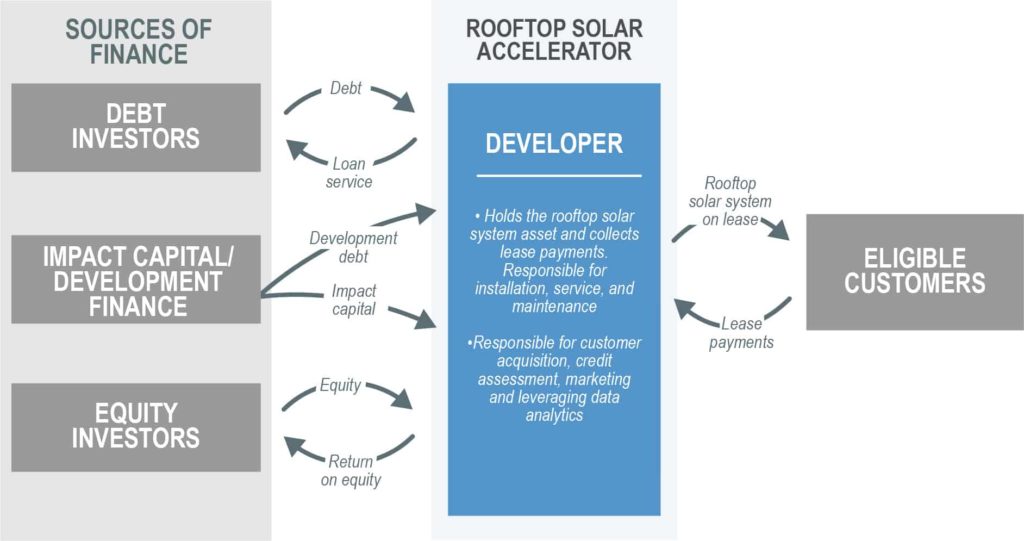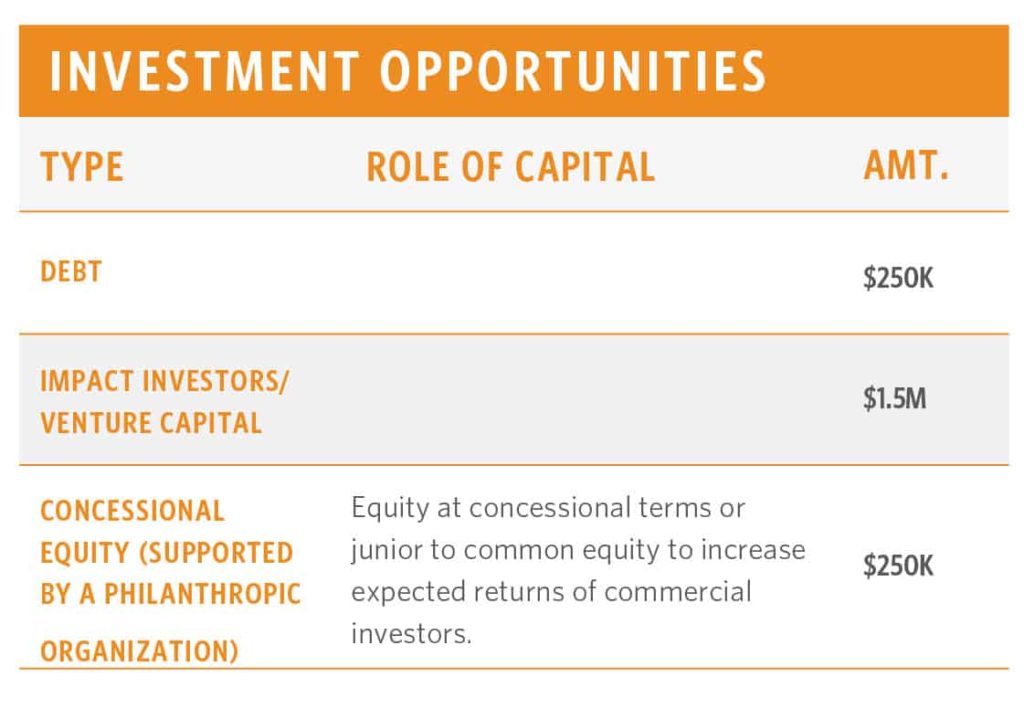To date, India has achieved 2.5 GW of rooftop solar installations, mostly on commercial and industrial roofs. In the residential market specifically, there is vast potential of over 60 GW, but only 0.5 GW had been installed as of March 2018. Although there are several factors working in the market’s favor, including a renewed push from the government, rising grid tariffs, and declining PV prices, there are several barriers that are inhibiting the market.
Customers face high upfront costs and perceived performance risk. And developers face difficulties in identifying customers, high customer acquisition costs, limited access to commercial finance, and long payback periods. This instrument employs innovative features to overcome these barriers and mobilize the adoption of residential rooftop solar in uncharted smaller-sized cities in India.
The Residential Rooftop Solar Accelerator is a lease model that aims to accelerate mass adoption of residential rooftop in India, through standardized product offering, easy financing, and efficient execution at scale.
INNOVATION
This instrument is a lease model that targets persistent barriers to the deployment of residential rooftop solar, through several key features:
• Deploys data-driven customer acquisition: Advanced analytics will uncover early adopters, raise the conversion ratios, and lower acquisition costs.
• Standardized product offering: To make solar easier to understand, homeowners will be presented with only 1 or 2 configurations of system sizing and financing options.
• Accessible financing options for customers: Lease financing would allow homeowners to experience solar without incurring high upfront costs.
• Access to debt financing by minimizing off-taker risk: To provide comfort to debt financiers, the proponent intends to reduce the payback period to 3-5 years (even if the lease tenure is longer). In addition, third-party credit assessment of off-takers
and stringent lease agreements will further reduce default rates.
By 2022, the instrument has the potential to mobilize US$ 75 million and install rooftop solar projects for 20,000 households, abating 130,000 tons of carbon emissions.
IMPACT
• The instrument plans to install 250 projects of 5 KW each during the pilot in Kota, Rajasthan by 2019. This would mobilize US$ 1 million and save up to 1600 tons of carbon emissions.
• At scale, the instrument has the potential to install 5 KW projects for 20,000 households. This would mobilize US$ 75 million and abate 130,000 tons of carbon emissions by 2022.
• If the business model were to be replicated by other companies, the instrument could account for 500 MW of installed capacity by 2022, enough to power 100,000 homes, abating 640,000 tons of CO2.
DESIGN

By scaling a standard solar leasing model, the proponent will generate revenues through monthly payments made by its customers. These revenues will be used to service loan repayments and meet operational expenses. The residual cashflows will be either reinvested or given back to shareholders. The Rooftop Solar Accelerator’s interaction with different stakeholders is depicted in the instrument mechanics graphic. In addition to the leasing model – which is relatively new to India – this instrument differs from other attempts to unlock rooftop solar in several important ways:
• It introduces an analytic-driven framework for customer acquisition and credit evaluation. Data will be leveraged to segment customers based on income levels, appliance ownership, education, awareness levels, profession etc.
• It will ensure standardization to generate operational efficiencies within the leasing model, while making it easier for customers to decide. Homeowners will be presented with only 1 or 2 configurations of system sizing and financing options.
• The entire sales cycle will be managed through a mobile app, which will further ease the training process and optimize the sales cycles.


